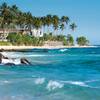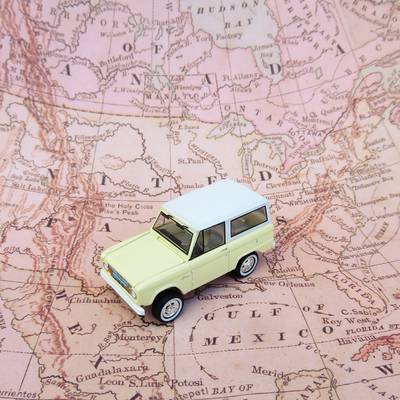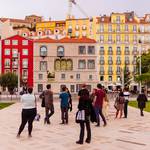General
 What is the best time to visit Portugal?
What is the best time to visit Portugal?
 What is the climate like in Portugal?
What is the climate like in Portugal?
 How do I access internet in Portugal?
How do I access internet in Portugal?
 What NOT to do in Portugal?
What NOT to do in Portugal?
 Where should I go in Portugal for a week?
Where should I go in Portugal for a week?
 What type of adapter do I need for the outlets?
What type of adapter do I need for the outlets?
 What should I pack for my trip?
What should I pack for my trip?
Transport
People
Accomodation
Food & Drink
Sightseeing
Legal
Money
Safety & Health
Family travel

Where should I go in Portugal for 2 weeks?
Portugal is a rather small country and 2 weeks should be enough for you to experience the country and see what it's all about. It has all the best things – good food, nice music, pretty scenery, cheap wine, friendly people – wrapped up into one compact, easy to navigate and inexpensive country.
Day 1 – 3: Lisbon. A trip to Portugal is likely to begin in the capital city of Lisbon. Largely destroyed by an earthquake in 1755, Lisbon is a mishmash of old and new. It’s obvious which parts of the city survived the quake and which parts didn’t. You’ll find some of the top chefs and trendiest restaurants in Lisbon but also the remnants of old monasteries and military forts from the 11th century.
With options abound, it is easy to spend 3 days here. You could spend a whole day wandering the streets of the Baixa and Alfama neighborhoods, hopping on and off the old school Number 28 tram that runs throughout the city. There is no need to hire a walking tour if you don't want to do so, since it’s pretty easy to navigate on your own especially with the help of a guide book. A few key stops to check out as you wander the streets are:
- Plaza do Comercio
- Elevador de Santa Justa
- Castle of Sao Jorge
- Mirador of Senhora do Monte
- National Panteon
Day 4: Evora. Characterized by rolling hillsides and fields of cork trees, the Alentejo is Portugal’s largest region and incredibly picturesque. There are a couple of options how to get there. You can take a quick 1.5 hour train southeast from Lisbon to Evora, the Alentejo’s most famous city, or if you prefer to drive it’s easy to navigate the main highway.
Evora's most famous tourist attraction is, without a doubt, Capela dos Ossos. This Bone Chapel inside the Church of St Francis is literally made of human bones and a must-see when visiting the city.
Evora dates back to the Roman Empire which is notably apparent with the aqueduct that runs through the center of the city. Built inside the ancient city walls, central Evora is easily walkable and you can make stops at sights like St Francisco church, Giraldo Plaza and the Roman Temple.
Day 5 – 7 Atlantic Coast. Once you have thoroughly gorged yourself on the cuisine of Lisbon and the Alentejo, it’s time to hop in the car and head towards Porto by driving along the Atlantic Coastline. There are several picturesque coastal villages to explore. Your first stop on the Atlantic Coast is likely to be Sintra – one of Portugal’s most famous & iconic cities.
Similar to Evora, you can access Sintra by train or car and it’s only about 45 minutes west of Lisbon. Once home to the palaces & summer homes of Portugal’s rich and royal, Sintra feels like something straight out of a fairytale. Its small cobblestone streets carry old world charm with a quirky 18th century opulence of colorful manors that dot the skyline, all housed in the incredible natural beauty of a wooded mountainside town overlooking the Atlantic Ocean.
Day 8: Coimbra. Coimbra is a towering hilltop medieval town with an incredible view over the Mondego River. A perfect place to stop on your drive up to Porto, Coimbra is home to the oldest university in Portugal. Because of the youthful and curious energy of Coimbra as a university town, it feels totally different than some of the other cities in Portugal.
Divided into the high city and the low city, you’ll notice a distinct difference between the two. There are tons of monuments and historical sights to see in the old city, such as the Old Cathedral, Joanine Library, the Santa Clara Monestary, and Clock Tower. Try wandering your way up the city’s iconic hill at your own pace and carrying a short guide book along way to guide your sightseeing. It’s easy to wander through the small streets, and since you just keep heading up the hill – eventually all streets lead to the top!
It dates back to medieval styles and is often a single serenading troubadour. There is a mixture of both new and old bars to go to, and there are even some spots that play live Fado music on their patios so you can listen outside on a nice night!
Day 9 – 11: Porto. Porto still retains lots of the grit and grime you’d expect from a port city. You’ll see fishermen and food stall owners buzzing through the graffiti-clad walls of street food markets right next door to a Michelin-starred restaurant or 100 year old Port Wine cellar. Porto feels very under the radar and there are fun nooks and crannies to discover all on your own!
You might love exploring the downtown area of Porto on foot because there are beautiful views from both sides of the city overlooking the Duoro River. And you definitely need to educate yourself on the region’s proud export – Port Wine – which is conveniently named after the region’s largest city.
Grab a glass of wine at a restaurant and wander your way across the Dom Luis I bridge to the Gaia neighborhood on the southern bank. You must catch a sunset here! You can meander along the waterfront malecon, watching men pack or unpack Rabelo boats (traditional flat bottomed cargo boats used to transport port wine down the Duoro River) while enjoying the hum of the city.
If you’re tired from all the walking at the end of the night, there is a convenient cable car with beautiful views that will take you uphill from the river where you can easily catch a train on Porto’s convenient public transportation.
Day 12 – 13: Douro Valley. Your final stop before leaving Portugal should be the Duoro Valley. Home to the grapes in port wine, this dry and rocky region runs along the Duoro River providing for stunning landscape views. Little white-washed quintas will pepper steep terraced vineyards along the road on your way to the heart of Portugal’s wine region, about 3 hours’ drive east from Porto. It is well worth renting a car for this portion so you can stop, drink and look at scenery at your own pace.
There isn’t much to do in the Duoro region that isn’t wine related, but if you are a wine lover, you could easily spend a week exploring the little hamlets and quintas throughout the whole Duoro region. Stopping at various vineyards along the way could easily chew up a day or two and it is nice to move a little slower in this region.
Day 14: Departure. Depending on where you’re flying to, there are daily international flights from both Porto or Lisbon. A three hour high-speed train connects the two major cities, so it is easy to get between them if you end your itinerary in the city where you are not departing from.

What can I bring home from Portugal?

Am I expected to tip in Portugal?

Where to buy alcohol in Portugal and how much does it cost?

How do I use ATMs in Portugal?

What am I allowed to take with me to Portugal?
